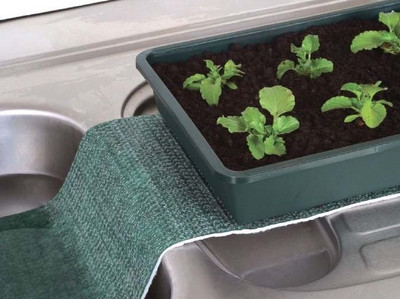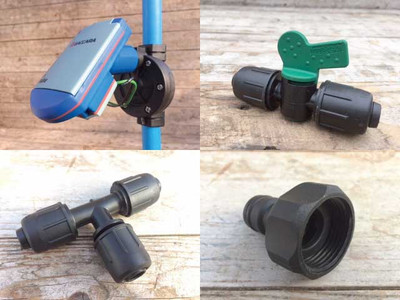Greenhouse Irrigation
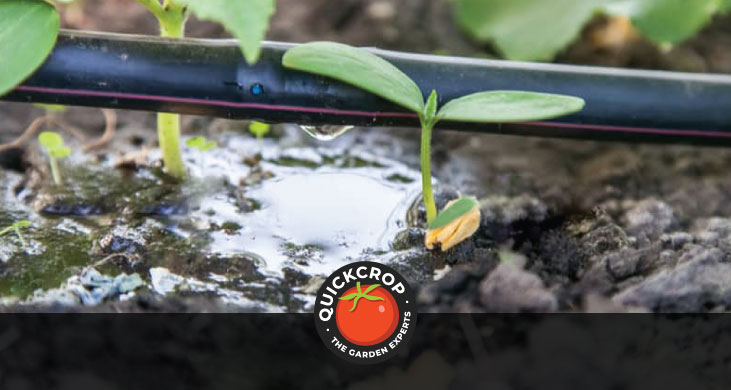
One of the key differences between growing plants inside and growing them outside in your garden is that indoor plants don’t benefit from rainfall. As such, irrigation becomes even more important as you and you alone will be providing your crops with one of the key building blocks of growth. And it’s doubly important in the environment of a greenhouse, where very warm temperatures can dry out plants and evaporate moisture before the roots can absorb it. There are several tried and trusted methods of greenhouse irrigation available to you, and we’ll discuss a few of them here.
Watering Plants in a Greenhouse
Just as in the garden outdoors, plant watering needs will differ depending on factors like the weather, the time of year, the plant type, what kind of container you are growing in, and so on.
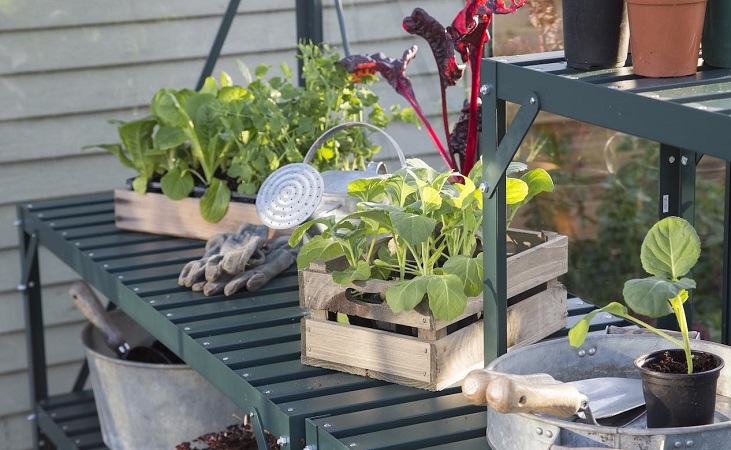
It's best to water in the morning; this allows plant roots plenty of time to take up moisture. By contrast, in the midday sun water can evaporate from the soil and go to waste before the plants have availed of it. Evening watering is also a good option, but with morning watering you don't run the risk of plant foliage remaining damp or moist for long periods (which can cause fungal or pest problems).
In general, deep infrequent watering is always preferable to frequent light watering. Don't be afraid to let soil dry out inbetween waterings, as long as the plants look to be in good health. Signs of underwatering include:
- dry, powdery soil
- limp, wilting leaves (although this can also be a sign of overwatering)
- dull, faded colour of plant leaves
- slow growth
- the plant pot feels lighter than usual
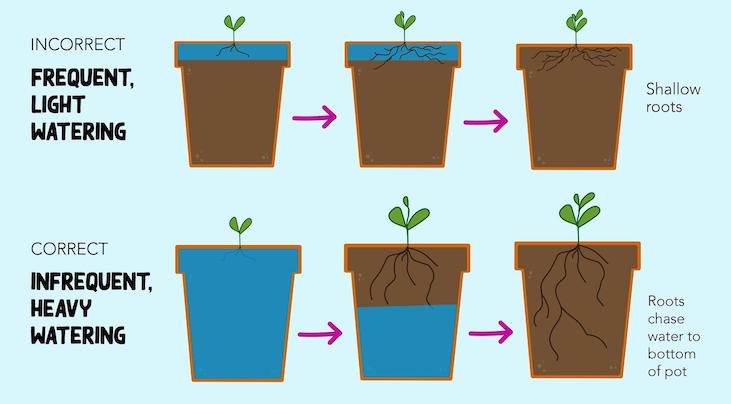
Some plants, such as succulents or plants with silvery foliage, will need very little in the way of watering. Indeed, overwatering is more of a threat for these varieties.
In the warm months of summer, plants may need watering twice a day. In winter on the other hand (if you choose to grow in your greenhouse during the winter, that is) you can get away with watering once a fortnight.
Plants in small containers will often need to be watered more frequently, as the roots are somewhat constricted: they can't seek out moisture in lower levels of soil like they can outside.
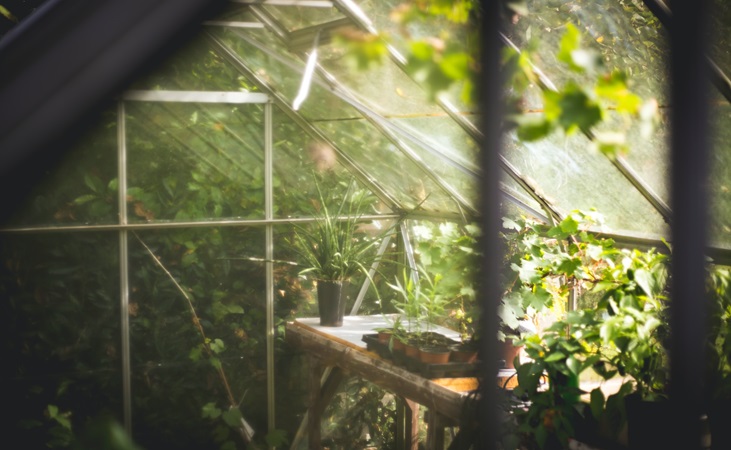
Automated or Manual?
Watering your plants manually involves a lot of going to and fro with watering cans, switching off taps and so on. Many gardeners don’t really mind this - it’s all part of the hobby, and it’s a bit of exercise if nothing else. Watering by hand also allows you to adjust the amount for each plant, and investigate its health while you’re at it.
Automated irrigation on the other hand will save you time and free you up to attend to other garden tasks. You can set timers for daily watering and adjust for changing weather conditions. You can also plan a holiday or some time away with the family - without worrying about the health of your greenhouse crops or having to hassle the neighbours.

Baccara automatic water timer
View ProductSome greenhouse irrigation systems feature smart moisture sensors, which monitor precipitation rates and activate when your soil is dry. You can control and monitor these systems through your mobile, which can be a bit of a game-changer.
Automated irrigation may sound like something complex and expensive to set up within your greenhouse, but it really depends. Some types of automated (or semi-automated) watering are deceptively simple and cost-efficient. With other types there are running costs to take into account as well as the cost of installation.
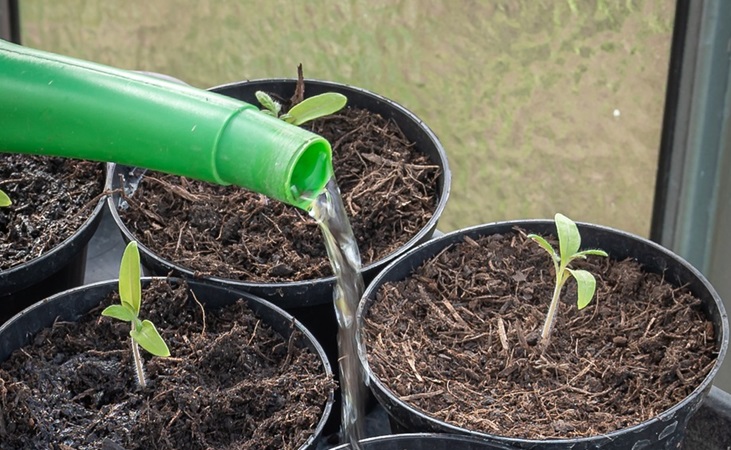
Manual Irrigation
You may like to keep things simple and do your irrigation by hand. When watering with a can, insert the spout under the leaves rather than watering over the leaves. This allows the plants to absorb the water more efficiently, through the soil. Fill the space to the top of the plant pot. A fine rose watering can or spray head can be used for seedlings.
One of the advantages of watering by hand is that it allows you to take into account different watering needs and quantities for different plants. However if you have a bigger greenhouse or a lot of plants to keep on top of, this method can become very time-consuming and labour-intensive.

Galvanised Watering Can
View ProductYou can also use a hose pipe connected to an external water supply. A lance attachment connected to the hose enables you to water with a ‘soft rain’ effect or apply directional sprays. It’s a handy way of reaching plants towards the back of greenhouse staging - in places that might be hard to reach by hand.
Capillary Mats
Irrigating plants and seedlings by using capillary mats is a very popular technique. You lay this mat out on a bench or shelf and place your plant pots or seedling trays on top of it. A gutter or pipe - placed just underneath or along the sides of the bench - provides a constant source of water. Water can be provided by a water butt or recycled water (if you’d really like to keep things organic and earth-friendly). However, avoid using rainwater from a butt or container for seedlings - as they can be vulnerable to fungal spores. Use stored rainwater on plants that are a few weeks old at least.
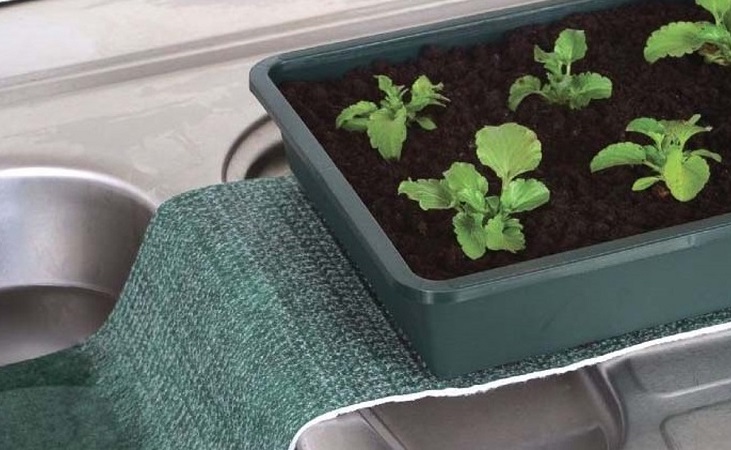
The capillary mat absorbs the water from below and releases it slowly for the plants or seedlings, whether through your seedling tray or the drainage holes in your pots. This wicking action will continue until the soil reaches an optimum moisture level. Evaporation is naturally minimised so it’s an efficient, non-wasteful method of irrigation. Capillary mats have also been shown to be very beneficial for deep, healthy root growth. This method of irrigation is very easy to set up and get the hang of. It doesn’t quite qualify as ‘automatic irrigation’, as you’ll still need to refill the water source manually to keep the system ticking along.
Something that you’ll need to watch out for if using capillary mats is algae, as the constantly moist conditions can lead to the growth of this greenish material. It may also be necessary occasionally to water plants from above, e.g. if you’ve recently applied fertiliser. Capillary mats are more suited to small areas for propagation and growing.

Capillary Matting & Cover
View Product
Drip Irrigation
Drip irrigation is really the ideal setup for most greenhouse gardeners. We covered drip irrigation in-depth in our polytunnel irrigation post, but each plant zone essentially gets its own tube, with each tube connecting to a supply line. The tube has a number of emitters which drip water steadily into the soil when the system is activated. Line valves enable you to switch off the water flow for less demanding plants. The system can be timed and automated, or you can switch it on manually.
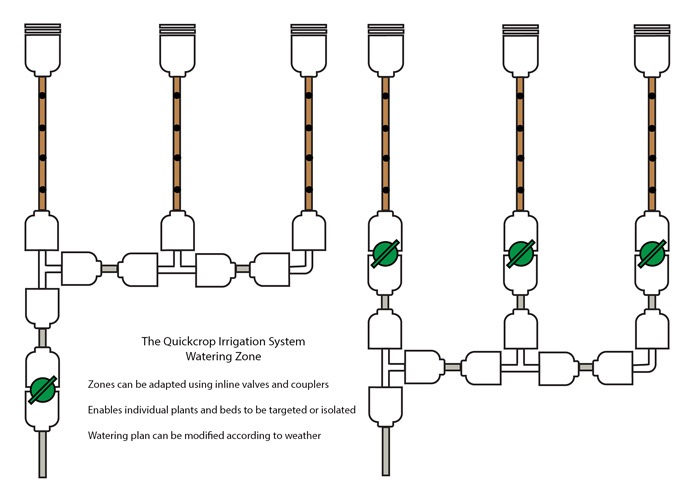
Drip irrigation delivers water more effectively to the root zone. It also delivers a more precise and efficient amount of water than other methods, with little or no chance of water evaporation or runoff. Each plant gets what it needs, and has all the time it needs to absorb it from the soil. There’s no standing water left on leaves, and none of the attendant bacterial growth or plant problems that go along with that.
For all the benefits that it brings with it, drip irrigation is very reasonable expense-wise. Here at Quickcrop we recommend the Baccara water timer for use with drip irrigation systems. It is more durable and long-lasting than some other water timers, many of which eventually suffer problems with leaking valves.

Drip Irrigation System - 16mm Parts Picker
View Product
Overhead Irrigation
For an overhead watering system, pipes are connected to a water source and installed in an overhead position. A number of sprinklers or nozzles with different spray ranges are then fitted. How many you need will depend on the size of your greenhouse, but it’s good practice to keep the nozzles roughly 1.5m apart.
An overhead sprinkler system is not as expensive as you might think and it will save you a lot of time watering. However, this type of irrigation method can increase the risk of plant disease due to the moist conditions created by overhead watering. There’s a possibility of oversaturation and increased water runoff. An overhead system can be particularly suitable for green crops such as lettuce, kale and cabbage.

Kale 'Red Russian'
View Product
Misting
A misting system is similar in setup to overhead irrigation. As the name suggests, it creates a mist of water droplets instead of a sprinkle of water. This misting function can be timed and automated. One advantage of misting is that it can have a cooling effect in the greenhouse, something invaluable during warmer spells of weather when you may struggle to keep temperatures down. On the flipside, some plants may not like the extra humidity in the greenhouse. This type of irrigation is fairly uniform and it’s not so easy to fine-tune the amount of mist for differing plant needs. There is also an increased risk of bacteria and mould in humid conditions.
An alternative is to use a manual plant mister to single out individual plants, providing a 'dusting' of moisture for the foliage. 'Damping down' the greenhouse floor is another way of increasing relative humidity and reducing plant transpiration or the risk of heat stress.
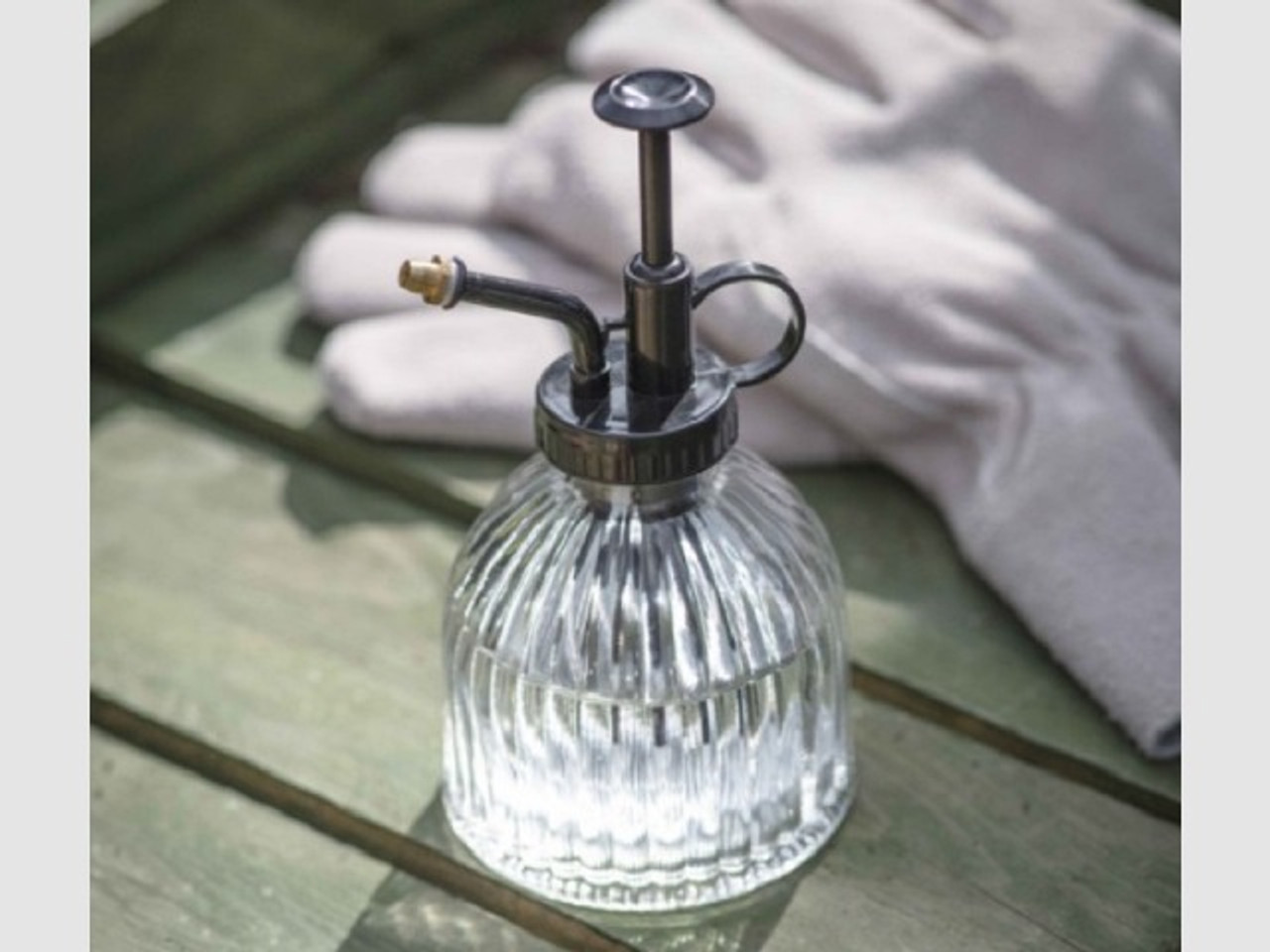
Glass Plant Mister (Clear)
View Product
Overwatering
Overwatering isn’t just about ‘drenching’ your plants or using too much water; it can also happen if you water too frequently. It’s a difficult balance to achieve in the greenhouse, where conditions can get very warm. You want to make sure that your crops aren’t parched, so the temptation is to water well and water often.
However, if you water too often then the soil is not getting enough opportunity to drain. The water requirements of different plants can differ greatly, too. Temperature, humidity levels and the growth stage of the plant are other factors that influence what the ideal level of irrigation should be.
By checking plants individually you can get an idea of what their needs are. A dry, crumbly soil is a reliable sign that your plant or crop should be watered more frequently. Drooping leaves or dry, brown leaf tips are also red flags.



